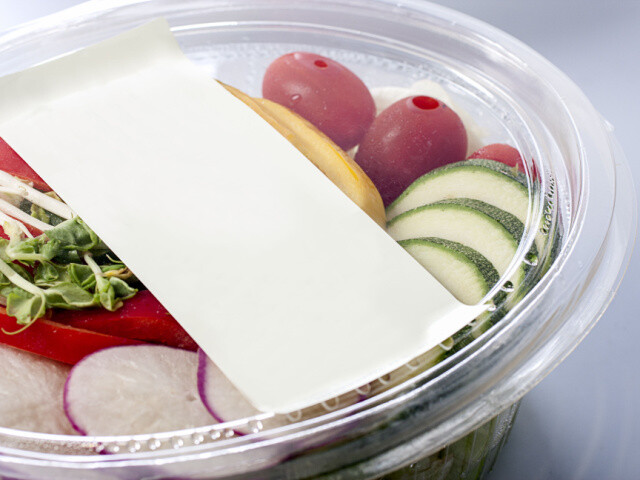Oct 26, 2023 - 3-5 minutes
Why Your Label May Not Be Improving PET Recycling

Learn how labels play a role in PET recyclability levels and stream effectiveness and how Bostik's all-temperature, wash-off label adhesive innovation is improving circular recycling.
According to Positively PET, polyethylene terephthalate (PET) is the most used plastic due to its extensive life cycle. Therefore, it is also one of the most recycled plastics. However, like other recyclable plastics, all the components of a PET package must be designed for recyclability in order to provide second or third generational usage.
Labels, in particular, play a role in PET’s overall recyclability levels and stream effectiveness. Learn about their impact and a solution to help reduce it.
How Labels Impact PET Recycling Levels and PET Recycling Stream Effectiveness
When end-use labels are not properly washed off from PET material and enter the recycling stream, they have the potential to increase haze percentage or yellowness seen in PET material once it is broken down and extruded back into an application such as bottles or trays.
Overtime, this can mean that PET is not able to be recycled back into PET once again.
In particular, the APR Critical Guidance testing protocol states haze percentage must be less than 10 percent in PET control material in order for it to still “pass” and be recycled into PET again, and yellowing levels must be less than 1.5 degrees from the control material. Exceeding these limits can lead to:
-
Reduced clarity: It can be difficult to identify PET material during sorting via FTIR scanners in recycling facilities once the PET flakes have been processed. The scanners search for color during sorting, which includes clear; however, if the PET quality is no longer clear, it will be rejected from the PET stream.
-
Decreased circularity yield: While haze or color-impacted PET can be turned into other recycled items including clothing fibers or carpets, it can no longer contribute to PET circular recycling, which decreases the overall yield being utilized for multiple generational usage.
-
Increased degradation: The haze or yellowness within PET material causes stress and irregularities, weakening its overall strength and structure. This can allow it to degrade at a faster rate. Additionally, the PET’s crystallinity levels may decrease, making it less stable over time and more susceptible to moisture absorption, which can further cause degradation.
The Solution: Wash-Off Label Adhesives
As the bonding agent between the label facestock and PET package, a label adhesive has the ability to cleanly remove from the packaging if it includes wash-off capabilities. This enables the label to leave little to no residue behind, skimming off to the wash solution’s surface to prevent it from going through the PET stream. Once the PET package is free of labels, it can be melted, extruded and turned into a new PET package.
In order to ensure the wash-off label adhesive has the right performance capabilities, it is a good idea to ensure it passes APR Critical Guidance Testing, which includes:
-
Granulating PET into flakes
-
Washing PET flakes
-
Separating PET flakes from label adhesives
-
Extruding PET flakes to make plaques
-
Testing plaques for haze and color properties
However, not all PE applications are ideal for wash-off label adhesives
While a wash-off label adhesive may pass the APR Critical Guidance testing, formulations typically cannot offer high performance in applications exposed to temperatures of 40 °F (4.4 °C) or lower, such as freezer-grade or cold-fill applications. This is because the polymer in a general-purpose wash-off label adhesive is not soft enough to sufficiently wet out and adhere at low temperatures. Due to this limitation, brand owners typically opt to either experience performance failure while using general-purpose wash-off label adhesives on cold applications, or resort to non-wash-off label adhesives that do not provide recyclability.
Until now.
Bostik has formulated the first fully-formulated, APR-approved, all-temperature, wash-off label adhesive technology with Flexcryl™ ClearCycle 1000.
Formulated with waterborne acrylic pressure sensitive adhesive (PSA) technology, this innovation helps converters and brand owners:
-
Increase application usage: Unlike a general-purpose wash-off label adhesive, this solution has a low glass transition temperature, allowing it to maintain performance even in temperatures lower than 40 °F (4.4 °C). Therefore, brand owners can utilize all-temperature, wash-off label adhesives across PET applications without sacrificing performance. Further, brand owners have the assurance it will not negatively impact PET recycling streams since it passed APR Critical Guidance Testing.
-
Simplify complexities: With intrinsic properties to commonly-used, BOPP facestock, this innovation does not require surface pretreatment. Further, as a fully-formulated solution, it can be coated a low coat weights to streamline overall material supply and used in equipment you already own.
Additionally, it already passes APR’s Critical Guidance testing. Compatible with thermoform, bottle and clamshell applications, this solution provides ambient to freezer grade wash-off capabilities for PET recycling in all temperatures, proven to meet or exceed APR Critical Guidance Criteria for PET recycling.
Are you ready to address brand owner concerns on recycling by utilizing a new innovation to cleanly remove labels from PET packaging? Contact a Bostik expert to learn how Flexcryl™ ClearCycle 1000 can help you improve PET circularity across PET applications.
Other relevant content:
On-Demand Webinar: Understanding the Value of an All-Temperature, Wash-Off Label Adhesive
VIDEO: Demonstrating Flexcryl™ ClearCycle 1000’s Wash-Off Label Capabilities
Get in the Know on PET Plastic Recycling Myths
FAQ: Understanding the First All-Temperature, Wash-Off Label Adhesive
©2023 Bostik, Inc. All Rights Reserved
All information contained herein is believed to be accurate as of the date of publication, is provided “as-is” and is subject to change without notice. To review our full U.S. Legal Disclaimer, visit: https://bostik.com/us/en_US/privacy-policy/legal-disclaimer
